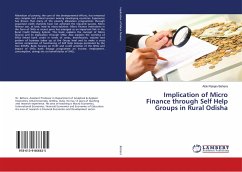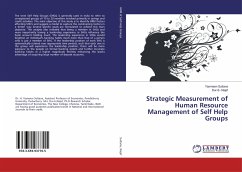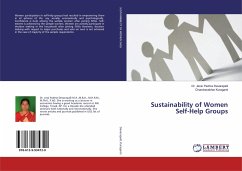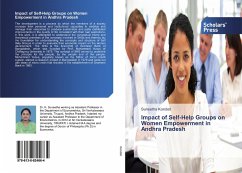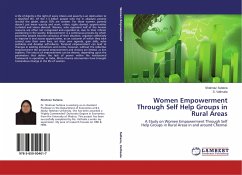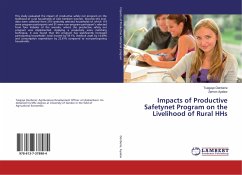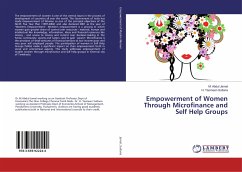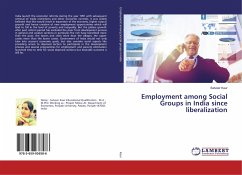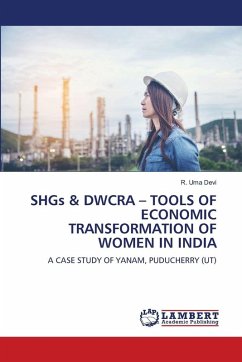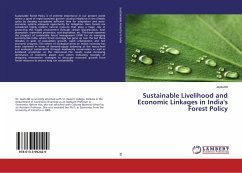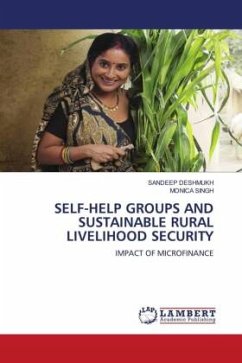
SELF-HELP GROUPS AND SUSTAINABLE RURAL LIVELIHOOD SECURITY
IMPACT OF MICROFINANCE
Versandkostenfrei!
Versandfertig in 6-10 Tagen
60,99 €
inkl. MwSt.

PAYBACK Punkte
30 °P sammeln!
Complex, diverse, and risk-prone (CDR) livelihoods account for a sizable portion of hunger and poverty. The microfinance through SHG-Bank Linkage Program (SHG-BLP) has surpassed ten million SHG mark and now covers over 120 million families. Does on-lending microfinance assist the rural poor in reducing vulnerability? Is this microfinance improving coping capacity and sustaining rural livelihoods? What changes have occurred in livelihood pattern of SHG households? This requires a complex, all-encompassing investigation into how microfinance affected sustainable rural livelihood security (SRLS)....
Complex, diverse, and risk-prone (CDR) livelihoods account for a sizable portion of hunger and poverty. The microfinance through SHG-Bank Linkage Program (SHG-BLP) has surpassed ten million SHG mark and now covers over 120 million families. Does on-lending microfinance assist the rural poor in reducing vulnerability? Is this microfinance improving coping capacity and sustaining rural livelihoods? What changes have occurred in livelihood pattern of SHG households? This requires a complex, all-encompassing investigation into how microfinance affected sustainable rural livelihood security (SRLS). An SRLS index containing nine components and several indicators has been constructed. The 'mixed-method' approach was used to collect the field data. More precisely, this study reported that microfinance has a positive and significant impact on the livelihood security of SHG households. Empirical findings of this study shed light on how SHG microfinance contributes to the development of a more sustainable, secure, and resilient livelihood. Our study recommends that low- and middle-income countries employ microfinance to accomplish SDGs of zero hunger-no poverty through financial inclusion.



